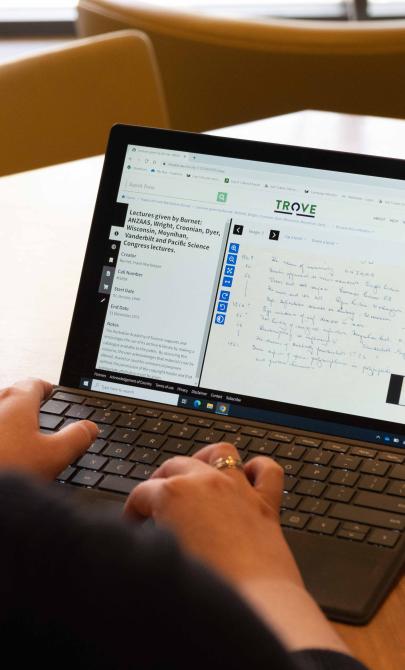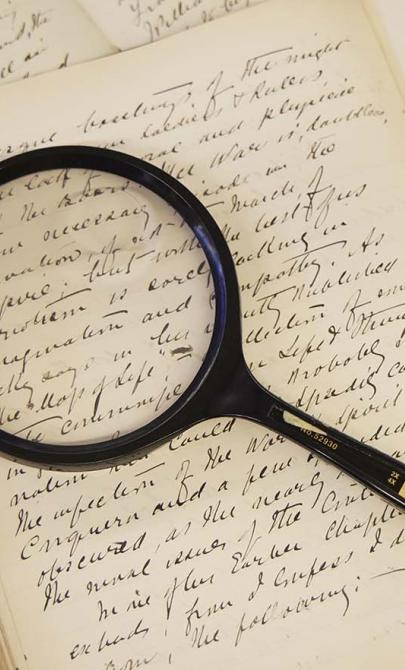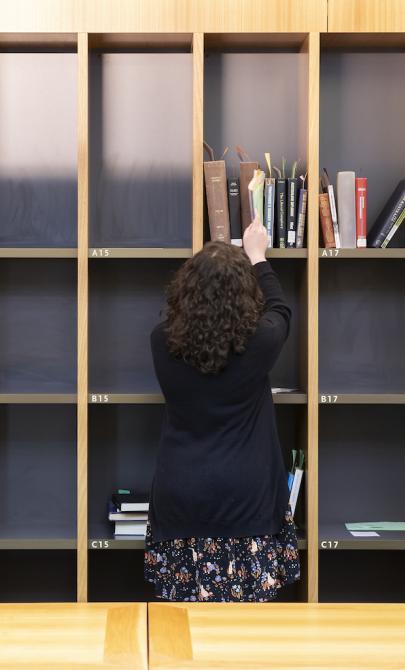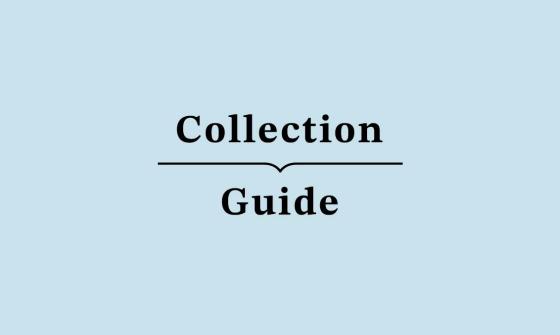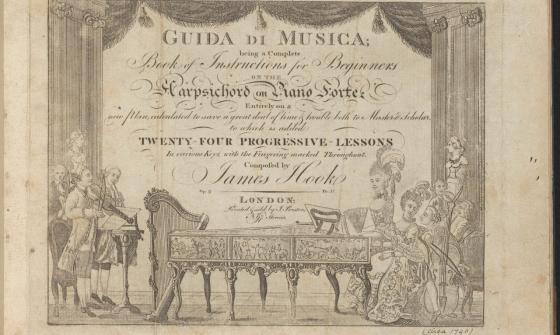State Theatre Collection
Key items in the collection
The State Theatre Collection consists of 12,569 music scores which were used in Australian cinemas in the era of silent films (roughly 1896 to 1929).
Most of them have ownership stamps indicating that they were originally in the music libraries of:
- Union Theatres Ltd
- Haymarket Theatres Ltd
- Spencer's Theatrescope Company or West's Pictures Ltd.
In some cases, the covers are annotated with the dates and names of Sydney, country and interstate cinemas that borrowed the music between about 1915 and 1930.
There is also some music that was performed by the State Theatre orchestra in the first 20 years of 'talking pictures'.
The music was written or arranged for piano and small orchestras, including:
- overtures
- serenades
- marches
- medleys
- waltzes
- fox trots
- barcarolles.
Some works were written specifically for motion pictures.
The great majority of the scores were published in Britain or the United States – there are also some Australian, French, German and Italian works.
The collection contains many arrangements of works by classical composers such as:
- Chopin
- Delibes
- Gounod
- Grieg
- Mozart
- Rossini
- Schubert
- Schumann
- Sibelius.
Among the composers of original works, some of which were extremely popular in the early years of the 20th century, are:
- Harry Akst
- Thomas S Allen
- Giuseppe Becce
- Irving Berlin
- Eric Coates
- Sam Coslow
- Buddy Fields
- Perry Fletcher
- George Gershwin
- Victor Herbert
- Leo Kempinski
- Jerome Kern
- Franz Lehar
- Pietro Mascagni
- Sigmund Romberg
- John Philip Sousa
- Albert Stoessel
- Oscar Strauss
- Arthur Sullivan
- Haydn Wood
- JS Zamecnik.
There are some manuscript scores, in particular music associated with the Cinesound musical director Hamilton Webber. They include scores and parts for at least 2 Cinesound features:
- Orphan in the wilderness (1936)
- Lovers and luggers (1937).
About the State Theatre
Two of the earliest film exhibitors in Australia were Cosens Spencer and TJ West.
Spencer
Spencer opened the Great American Theatrescope in Sydney in 1905. Soon after, he acquired a chain of cinemas across Australia. Spencer was the largest importer of films in the country by 1912.
West
West began screening films in Sydney in 1906. Within 4 years he owned 14 cinemas and had a nightly audience of 20,000 patrons.
Forming the Union Theatres Ltd and Australasian Films Ltd
In 1912–1913, West's Pictures and Spencer's Pictures merged with Amalgamated Pictures and the Greater JD Williams Amusement Company to form Union Theatres Ltd (exhibition) and Australasian Films Ltd (distribution).
The 2 companies were based in Film House in Pitt Street, Sydney, and they maintained a library of piano and orchestral music to accompany silent films. The music was lent to the 80 or more cinemas that made up the Union Theatres' chain.
Modernisation of old cinemas
Stuart Doyle, the managing director, began the large-scale modernization of many of the old cinemas in 1921.
In 1929, Doyle opened the grandest cinema of all, the State Theatre in Market Street, Sydney. Designed by Henry Eli White, it had seating for 2,572 people and contained:
- a gothic entrance hall
- bronze Florentine doors
- stalls upholstered in red leather
- a Grand Circle with paintings and rich tapestries
- a Royal Mezzanine Circle with an enormous chandelier.
In its opening months, the State Theatre had:
- an orchestra of 24 players conducted by Will Prior
- a permanent ballet,
- singers and solo dancers with American choreographers.
The Great Depression's effects
Within a few months, however, the State Theatre was facing the effects of the Great Depression. Union Theatres went into liquidation in 1931. Its assets were bought by a new company, Greater Union Theatres Ltd.
Facing strong opposition from the Hoyts and MGM chains, Greater Union Theatres struggled to survive. It depended almost entirely on film supply from Cinesound and Universal Pictures. Its fortunes improved during World War II and ultimately it was to be the largest cinema chain in Australia.
The State Theatre also survived, although it was too large for modern use and it lost money for many years.
Home of the Sydney Film Festival
The State Theatre became the home of the Sydney Film Festival in 1974. More recently, has been the venue for many musical theatre productions.
Background to the collection
The State Theatre Collection of music was donated to the National Library by the State Theatre in 1974.
The State Theatre Collection is kept together as a formed collection within the Music Collection.
Each work has been numbered in a single sequence and the scores and parts have been placed in plastic bags within boxes.
All the works have been catalogued individually, although the imprints are omitted.
The call numbers have the prefix 'MUS State Theatre N'.
This guide was prepared using these references:
- Russell Doust, The 8th wonder?, National Library News, vol 15 (1), October 2004, pp 14-17
- Ken G Hall, Australian film: the inside story, Melbourne, Lansdowne, 1977
- Graham Shirley and Brian Adams, Australian cinema: the first eighty years, Sydney, Angus and Robertson, 1989.
